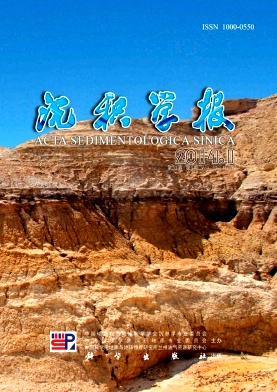Lithological Distribution of the Upper Triassic Flysch Langjiexue Group in Shannan Region, Southern Tibet: Implications to Provenance and Environment
- Publish Date: 2014-02-10
-
Key words:
- provenance /
- environment /
- sediment dispersal /
- ratio of sandstone vs. slate /
- Langjiexue Group /
- Upper Triassic
Abstract: The Upper Triassic flysch Langjiexue Group is widespread in southern Tibet. It outcrops south to the river Yarlung Zangbo and east to Bailang county, confined by three thrusts: Naidong-Sangri-Langxian Fault in north, Cuona-Milin Fault in east, and Renbu-Zhangda-Longzi Fault in south. A suggestion of the coeval Nieru Formation belonging to the Langjiexue Group may have the southern boundary fault southward extended to the Renbu-Zhangda-Longzi Fault. The Upper Triassic Langjiexue Group has been classified as either a part of the northern deep sea Tethys Himalayas or a component of the melange Xiukang Group——accretionary prism within the Yarlung Zangbo suture since it was nominated. Recent geological investigation on paleocurrent flow direction and provenance analysis of clastic composition and geochemistry demonstrated a different viewpoint from the past, in which lithological distribution has not been established. A geological field investigation of the Upper Triassic flysch Langjiexue Group was in this work carried out in Shannan region, southern Tibet, south to the river Yarlung Zangbo, during which lithology and thickness of variety of terrigenous rocks were described and calculated at sixty-five outcrop observations within fourteen geological traversal profiles in almost N-S direction. Then the data of the thickness were processed as follow: 1) calculating the ratio of sandstone versus slate for every observation——response to clastic grain size distribution and source, a method for purpose of recovery of sedimentary dispersal, paleocurrent system based on the principle of finer grain size if more further transportation; 2) projecting ratio value of each observation on the scaled geological map; and 3) editing equal ratio values and draw by isoline on the map for the same formation. It is noted that sandstone in the statistic of thickness, and slate covers the silty and non-silty slate. The sum of thickness is over 50 m, in general 80 m ~ 200 m, at each observation. All the data of each observation were optimal by excluding of stratal duplicate. This is because of statistics that could be repeated at two even more observations due to folding and thrusting, etc. for overturn of strata. To avoid this shortage, relative positions of observations were examined by balance section for each profile, and results show no duplicates of observed places happened to the observed places in this work. The observation of lithology shows there are almost no conglomerates in the Upper Triassic flysch Langjiexue Group, but it is mainly composed of low grade metamorphosed flysch sandstone and slate facies. The strata are comprised by alteration of sandstone/siltstone beds and dark gray to blackish (hemi-) pelagic shale. Sandstones are dominated by medium to fine feldspar / lithic (quartz) sandstone or greywacke with angular-subangular roundness and variable sorting. Lithologies are arranged in an upward fining Bouma sequence, in which graded beddings, parallel cross-beddings, horizontal, and ripples, are common. The sedimentary strata are metamorphosed into variable degree, which is increasing eastward and toward the metamorphic core complex, with the center formed by the Cenozoic granitic pluton. Strong folding and thrusting together with metamorphism and lack of fossils makes the sequences stratigraphically difficult to restore. However, former limited biostratigraphic evidences suggest that the group is of Norian-Rhaetian age. Isolines of lithological ratios display that ratio values of sandstone vs. slate decrease from north to south in majority of formations: 1) 0.12 to 0.01 of the slaty Nieru Formation in Nagarze, 2.4 to 0.6 near Xuesa village, Lhunze, and 25.0 extremely down to 2.0 between Xuesa and Zhari villages, Lhunze, indicating an discrepancy between east and west of Shannan region and likely development of channels under water; 2) 1.0 to 0.2 of the Songre Formation in western Shannan, and 0.6 to 0.1 in mid Shannan, in which ratios are bigger in western than in eastern Shannan region; 3) 1.89 to 0.22 of the Jiangxiong Formation in western Shannan, 2.0 to 0.4 in mid Shannan, and 0.8 to 0.4 in eastern Shannan, with few exceptances, and it is also bigger in western than in eastern Shannan region; 4) 1.5 to 0.5~0.8 of the Jiedexiu Formation southeastward and southwestward in Gonggar and Zhanang. Those results above indicate a total tendency of finer and finer grain southward, implicating southward direction of terrigenous matters. This observation is quite consistent with the previously published paleocurrent data, supporting and enforcing the scientific understanding of other origination of the Langjiexue Group instead of the paleo-Indian continent (Tethys Himalaya) in south. According to lithology and the variation (tendency, isoline shape, and pattern) of ratio values of sandstone vs. slate from east to west, it is proposed that the Langjiexue Group documents the sediments of middle and outer (lobe) submarine fan without inner fan, and there are at least two even more coalescing submarine fan systems during the Late Triassic in Shannan area. Recognition of possible amount and superposition of fans remains much work in future.
| Citation: | Lithological Distribution of the Upper Triassic Flysch Langjiexue Group in Shannan Region, Southern Tibet: Implications to Provenance and Environment[J]. Acta Sedimentologica Sinica, 2014, 32(1): 36-43. |






 DownLoad:
DownLoad: